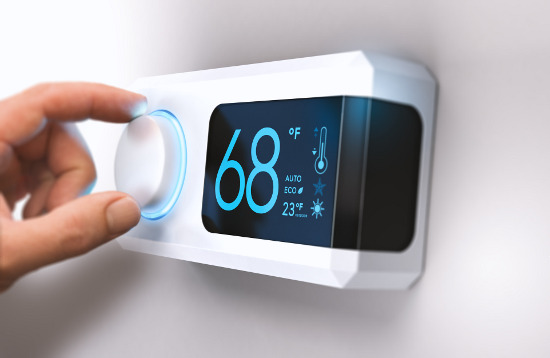The right thermostat can play a crucial role in making your HVAC unit more energy efficient. It acts as a control center, allowing you to optimize temperature settings, automate schedules, and adjust settings based on occupancy. Today, there’s a huge influx of homeowners opting for smart thermostats, and for a good reason.


Smart Thermostats
Smart thermostats can be installed by a Green HVAC Company and can take temperature control to the next level by offering advanced features and connectivity. These devices can learn your behavior patterns, adapt to your preferences, and automatically adjust settings for optimal energy efficiency. They often integrate with home automation systems and can be controlled remotely through mobile apps, allowing you to make real-time adjustments even when you’re not at home.
Temperature Programming
One of the key features of modern thermostats is temperature programming. Programmable thermostats allow you to set different temperature levels for various times of the day. This enables you to adjust the HVAC system’s operation according to your schedule. For example, you can program the thermostat to lower the temperature when you’re away from home or asleep, reducing unnecessary energy consumption.
Occupancy Sensors
Some thermostats come equipped with occupancy sensors or motion detectors. These sensors detect activity in a room and adjust the temperature accordingly. When no motion is detected, the thermostat can automatically switch to an energy-saving mode or adjust the temperature to a pre-set level. This prevents unnecessary heating or cooling in unoccupied spaces, saving energy and reducing HVAC costs.
Energy Usage Monitoring
Many advanced thermostats provide energy usage monitoring features. They provide insights into your HVAC system’s energy consumption, allowing you to identify patterns and make informed adjustments. By understanding how your HVAC system operates and consumes energy, you can take proactive steps to optimize its performance and reduce energy waste.
Remote Access and Control
With the right thermostat, you can control your HVAC system remotely. This feature enables you to adjust settings, change temperature levels, or turn the system on/off using your smartphone or other connected devices. Remote access allows you to make immediate changes based on your needs or unexpected schedule adjustments, avoiding unnecessary energy consumption.
Adaptive Learning
Some thermostats feature adaptive learning capabilities. These thermostats learn your temperature preferences over time and adjust settings accordingly. By analyzing usage patterns, occupancy, and external factors like weather conditions, adaptive thermostats optimize temperature control to minimize energy waste and maintain comfort.
Geofencing
Geofencing is a feature available in some smart thermostats that uses your smartphone’s location to adjust temperature settings automatically. When you leave a predetermined geofenced area around your home, the thermostat can switch to an energy-saving mode, and as you approach, it can start adjusting the temperature to ensure comfort upon your arrival. This feature ensures energy efficiency by aligning HVAC operation with your daily routine.
Integration with Home Automation
Thermostats that integrate with home automation systems allow for enhanced energy efficiency. They can work in conjunction with other smart devices, such as smart blinds or occupancy sensors, to optimize heating and cooling based on factors like natural light, occupancy, and weather conditions. The integration enables a coordinated and efficient approach to managing your HVAC system.
By investing in the right thermostat and utilizing its advanced features, you can maximize the energy efficiency of your HVAC unit. Temperature programming, smart capabilities, occupancy sensing, and remote access empower you to optimize temperature control, reduce energy waste, and ultimately save on heating and cooling costs while maintaining a comfortable indoor environment.

























